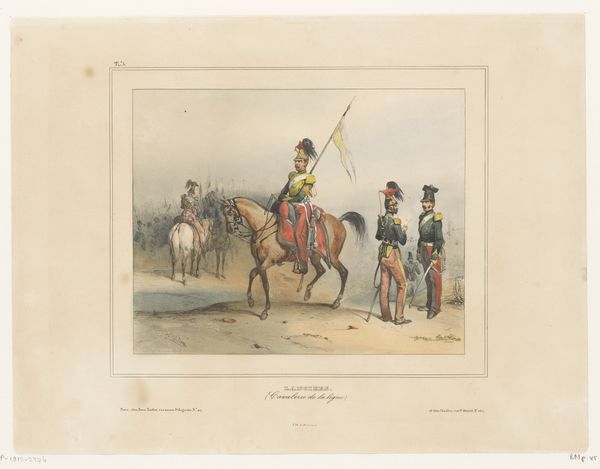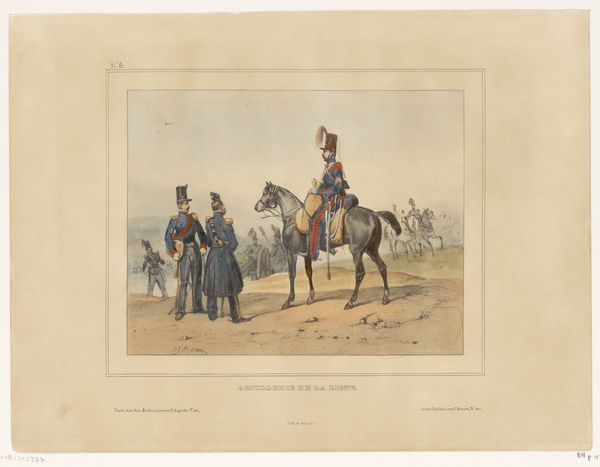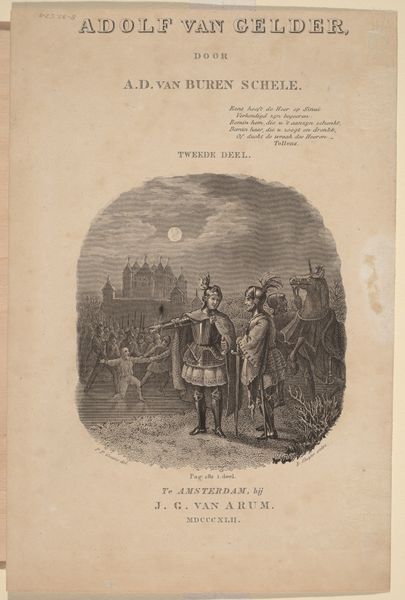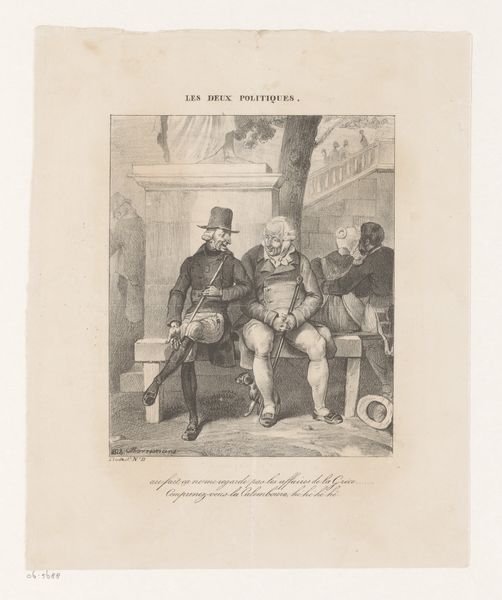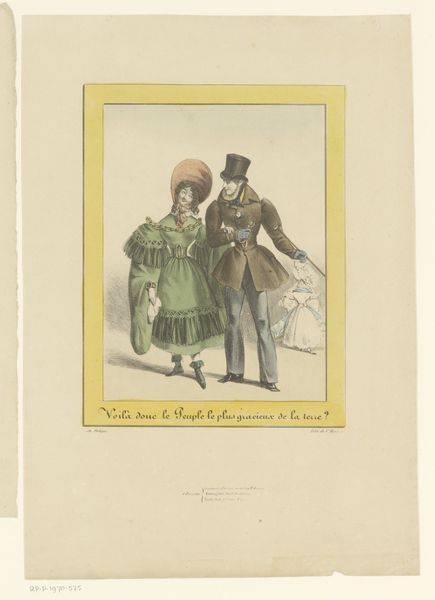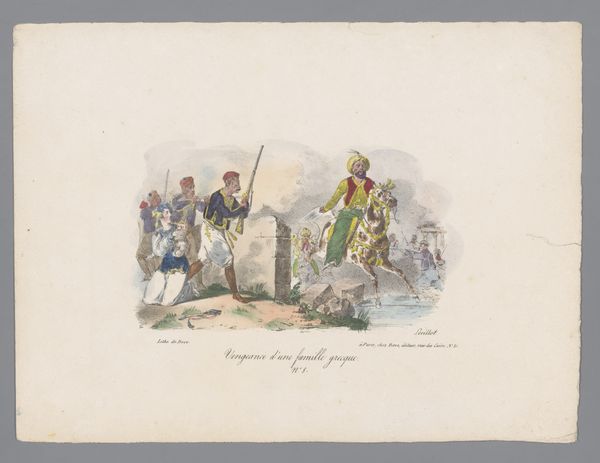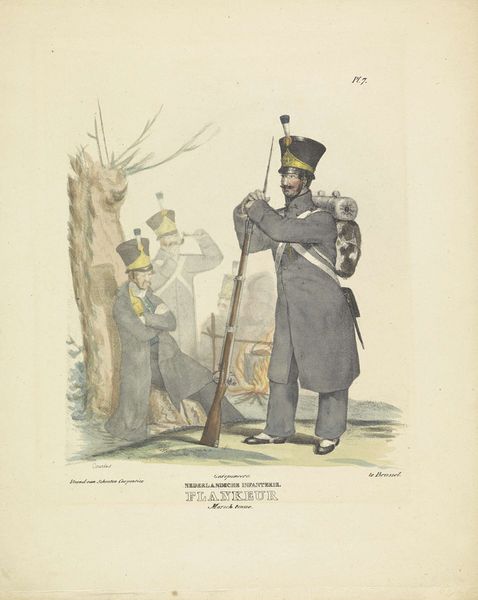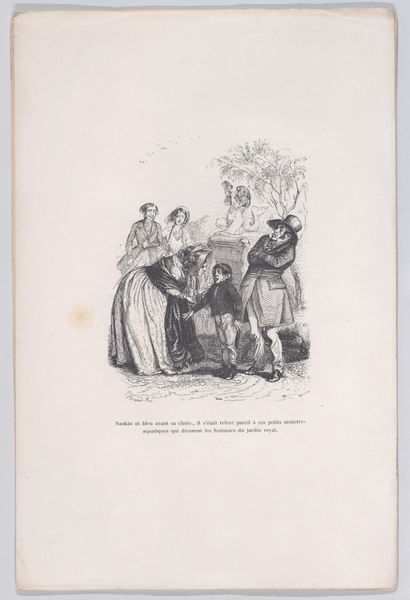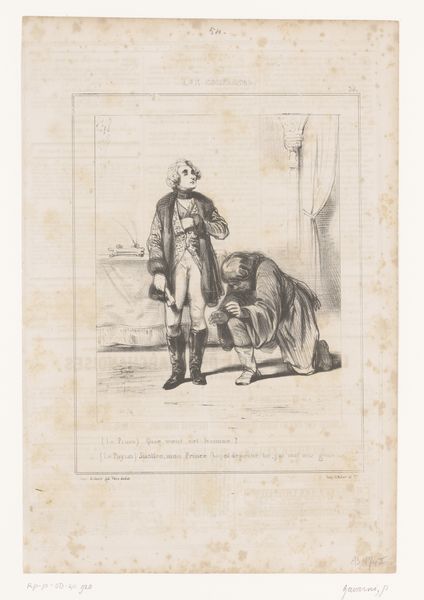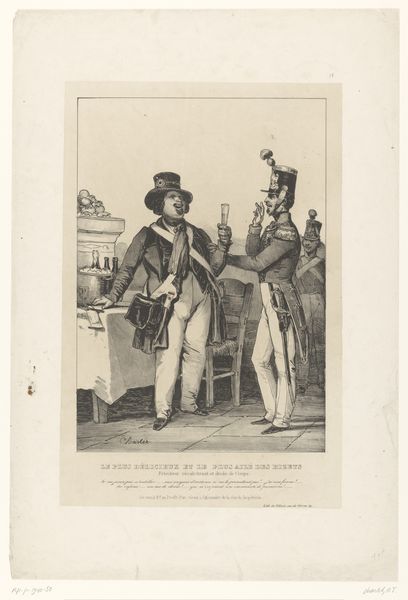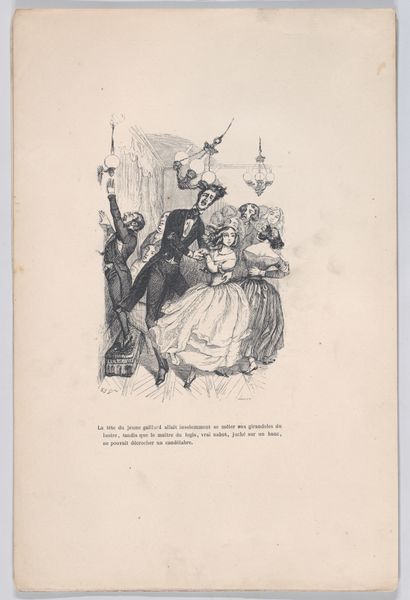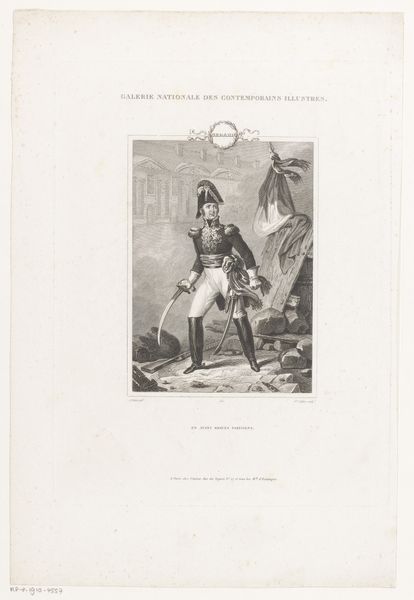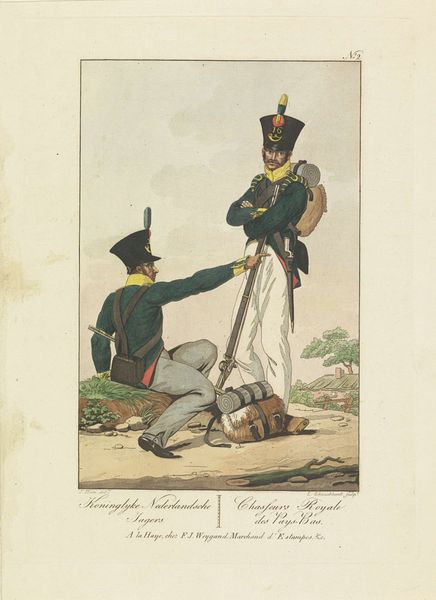
Karikatuur van een lid van de Nationale Garde na een schietoefening 1835 - 1837
0:00
0:00
lithograph
#
portrait
#
lithograph
#
caricature
#
historical photography
#
romanticism
#
19th century
#
genre-painting
Dimensions: height 261 mm, width 210 mm
Copyright: Rijks Museum: Open Domain
Curator: Looking at this, my first thought is "ouch!" What a perfectly timed snapshot of post-firing range discomfort! Editor: Indeed. This is "Caricature of a Member of the National Guard after a Shooting Exercise," a lithograph by Frédéric Bouchot dating from 1835 to 1837. It resides here at the Rijksmuseum. It's part of a larger commentary on the role of citizen militias during that period. Curator: That explains the bandage! I love how Bouchot captured the soldier’s pain—the grimace, the wobbly stance. He looks like he might need more than the picnic his wife is carrying. I can almost feel the kickback! Editor: Absolutely, and we shouldn't overlook the context of the National Guard itself. It was created after the French Revolution to maintain order, drawing its ranks from average citizens. However, the reality on the ground often involved more mishaps and comic disarray than strategic brilliance. This piece keenly observes that gap between the ideal and the everyday experience. Curator: Right! It’s a beautiful tension. Is it patriotism or just a really loud, smoky day out with a free lunch? And his wife! I bet she is not amused! The tension between the official posture and private suffering...pure theatre. Editor: Indeed. The wife stands as a reminder of domestic realities interrupting martial fantasies. Her presence also nods towards questions surrounding gender and citizenship in post-revolutionary France. Women’s roles were tightly policed; even providing sustenance to a guard could imply complex ideas about female participation in national identity. Curator: Fascinating. It’s amazing how much socio-political narrative Bouchot crammed into such a humorous frame! It is both very particular to the moment and speaks volumes about performance and expectation generally. Editor: Agreed. By turning to caricature, Bouchot tapped into a potent method for social critique, engaging viewers through humor while delivering astute observations about power and the absurdities of civic life. Curator: So much to unpack! The pain, the pride, the slightly singed eyebrows of it all... Editor: Precisely! The lasting power in works such as this is that they transform specific moments into an invitation to wider thinking.
Comments
No comments
Be the first to comment and join the conversation on the ultimate creative platform.
